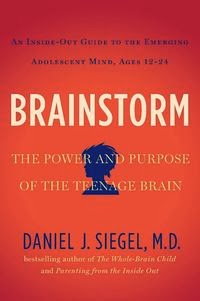 In family home evening, we discussed ideas for optimal brain health and emotional well-being based on Daniel J. Siegel's book Brainstorm, which Grandpa recommended.
In family home evening, we discussed ideas for optimal brain health and emotional well-being based on Daniel J. Siegel's book Brainstorm, which Grandpa recommended. Much as our bodies benefit from a balanced diet, our brains benefit from a variety of activities. I offer these tips like a smorgasbord of ideas you can choose from for a well-balanced brain diet. :)
Much as our bodies benefit from a balanced diet, our brains benefit from a variety of activities. I offer these tips like a smorgasbord of ideas you can choose from for a well-balanced brain diet. :)
1. "Time-in" means reflection on our feelings. Writing in a journal can help us SIFT (senses, images, feelings, and thoughts). This reflective process releases the enzyme telomerase, which repairs our chromosomes and keeps our bodies healthy (282-84).
2. "Sleep time" involves 8 1/2 to 9 1/4 hours for teens. This activity helps fight off disease, process insulin better and maintain good metabolism, handle stress and emotions better, and connect better in relationships. Without good sleep, memory is impaired, and we feel frustrated and irritated (284-85).
 3. "Focus time" means setting aside distractions and doing one-thing-at-a-time. For example, trying to read a book while texting seriously hinders the memory because the brain can't lay down synaptic changes. Many teens have trouble remembering what they're studying because they multitask--one of this generation's greatest challenges (287-90).
3. "Focus time" means setting aside distractions and doing one-thing-at-a-time. For example, trying to read a book while texting seriously hinders the memory because the brain can't lay down synaptic changes. Many teens have trouble remembering what they're studying because they multitask--one of this generation's greatest challenges (287-90).
4. "Downtime" involves unstructured, unplanned time to let our minds wander. This is a great way to recharge the mental batteries (290-91).
5. "Playtime" includes hanging out or goofing around, letting the mind and body run free. Having a good time helps the brain to be more creative (291-93).
6. "Physical time" involves 30 to 45 minutes of exercise, which enhances our mood and helps our bodies to feel better (294-95).
7. "Connecting time" means engaging in social activities and supportive relationships, which helps us be healthier and live longer! It means serving others and even connecting with Mother Earth by spending time in nature (295-97).
Hoping these ideas lead your brain to greater health and happiness!



